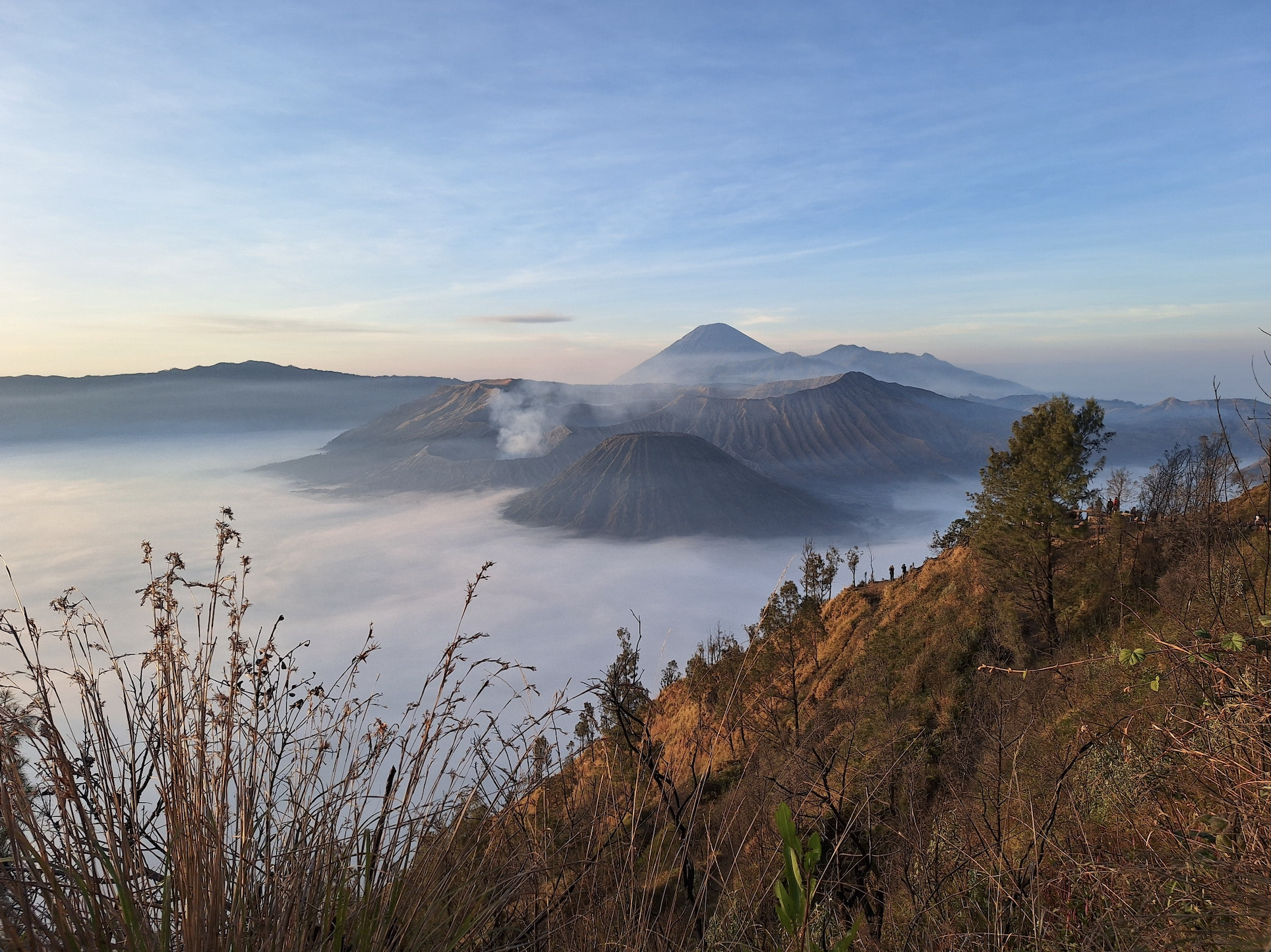Mount Bromo is one of the active volcanoes on Java Island which is very interesting. People might see it as the whole area of the caldera whereas it is only one of small volcanoes inside. This caldera is called Tengger after the name of the indigeneous people who live around Bromo area. A caldera is formed when the magma chamber is partially emptied during large eruptions and the land surface subsides and the area above the shallow magma reservoir collapses.
There was an ancient volcano here called Tengger as well which erupted hughly in two periods of time because it had two summits. The first summit erupted and formed Ngadisari Caldera. The second one erupted and formed Laut Pasir Caldera. So, basically Tengger Caldera has two sections.
The sunrise viewpoints are also located on Tengger caldera wall. The most common viewpoints are Penanjakan, Kingkong/Kedaluh Hill, Love/Lemah Pasar Hill, Dingklik, and Seruni Point. On those spots people can see sunrise and the whole view of Tengger Caldera and another active volcano called Semeru which is well-known as the summit of Java.
In the world, there are 3 types of volcanoes, namely composite volcanoes, cinder cone volcanoes, and shield volcanoes. Bromo Volcano is a cinder cone volcano. A cinder cone (scoria cone/pyroclastic cone) forms after a violent eruption blows lava fragments into the air, which then solidify and fall as cinders around the volcanic vent. Cinder cones may form by themselves or when new vents open on larger, existing volcanoes.
Cinder cones mostly are monogenetic volcanoes which is only active in one period of time because they only have low magma supply rates. There are several cinder cones in Tengger Caldera, they are Bromo (2,329 masl), Kursi (2,581 masl), Watangan (2,661 masl) Widodaren (2,650 masl), and Batok (2,470 masl). There are two white sand extinct craters in the south of Bromo called Segarawedi Lor and Segarawedi Kidul.
Mount Bromo: The General Geological Facts
- BY angga admin1
- DATE 08/02/2025


